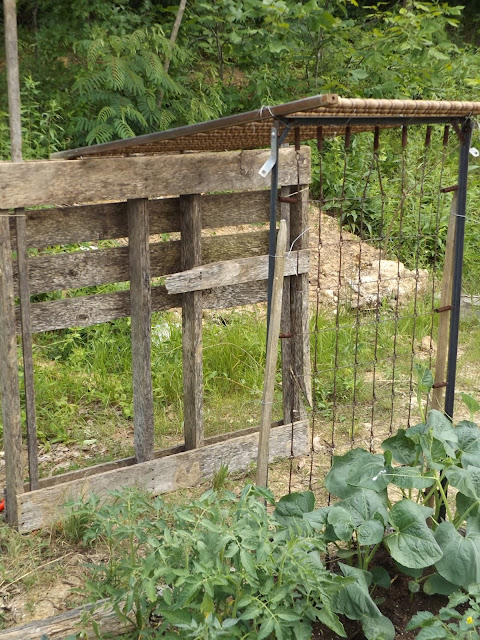Today James walked all the way to my grandparents' house to pick these yellow squash from our garden. There must be over 20 large squashes in the crate, weighing over 10 lbs. At the groceries stores, this harvest of 10-15 lbs organic non-gmo yellow squash would cost $20-30.
 |
| June 28th 2015 yellow squash harvest |
 |
| June 27th 2015 harvest |
Four days ago, we harvested a big bag of yellow squash, but not quite as many as we harvested today.
 |
| June 24th yellow squash harvest |
Along with the yellow squash, We have also harvested peppers and tomatoes.
 |
| June 26th 2015 pepper & tomato harvest |
 |
| June 28th harvest |
Several days ago I showed you pictures of the pumpkins, acorn squash, and butternut growing in the garden. After only two days, these fruits have tripled their size. You can compare sizes from the pictures I posted at Late June 2015 garden update, and the ones I took today, which you can see below. I wanted to also show you the progress on the melon patch. I'm telling you--hugelkultur mounds are perfect for growing melons and big fruits like squashes. I think I am growing successfully, more productive, larger fruits than all other years of growing food because I am using hugelkultur.
 |
| watermelon |
 |
| cantaloupe |
 |
| cantaloupe |
 |
| acorn squash |
 |
| pumpkins |
Other exciting happenings in the garden were that the the figs are finally making fruit. Some friends that live in California
were already getting figs months ago, so I was quite worried that none
of the fig trees would produce this year. Thankfully I found many figs
forming, and a couple that were getting bigger by the day.
 |
| Chicago Hardy Figs |
 |
| Chicago hardy figs |
Also, the Birdhouse gourds plants are flowering. I noticed the Gourd's flowers opened right before it got dark outside. I suspect they get pollinated by moths. Apparently, hard skinned gourds bloom in the evening and at night. I have read that many flowers that bloom at dusk are white flowers, like the gourd flowers you see below. Another thing I noticed was that over night (the following day) the gourd's flowers wilted and whithered away in the morning time.
"As with other members of the
Cucurbitaceae family, these
plants can have trouble with pollination. If pollinators are not
abundant in the area, you may have to pollinate by hand, by removing the
male blossoms and dusting them onto the female blossoms.
You can also take a Q-tip or small paint brush, rub some pollen from the male flower and put it on the female" (
Gardening for life).



























































